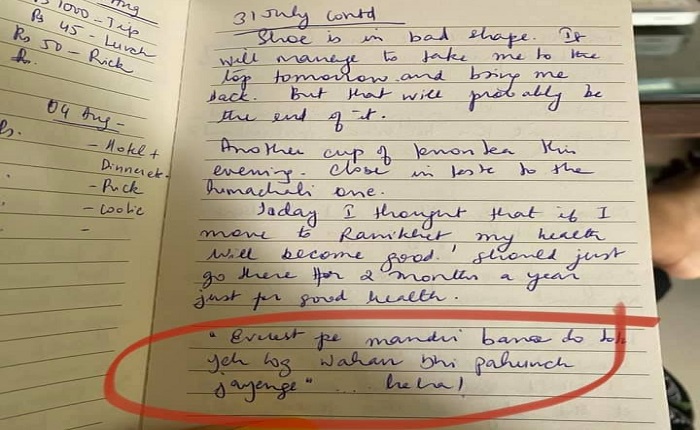
Back of Beyond in Arunachal Pradesh
Namasiba.
It is the last village on the Indian side after which the Tibet (China) border begins, located about 25 kms from Monigong, which is itself a hamlet.
Small homes made of bamboo, three tiny shops that sell daily use goods and no electricity, phone connection or internet… The well-to-do have tin roofs, and can offer you tea with milk, while the others offer black tea with salt. Some have solar panels and their own ‘electricity’ and one even has a TV which, thanks to the dish, can catch some shows.

Inside their homes, bamboo roofs or tin roofs, everything looks alike- a multi purpose central hearth where the fire burns- used to warm the family against the biting cold as well as to cook food (why waste the energy!), an altar that displays photos of Jesus and a board at the entrance that announces “Protestent”… This is a world so dissimilar to ours and yet so similar.
Everyone sits around huddled, children play nearby, pop corn is made and served with the milk tea and a welcome, as warm and enveloping as can be, in these parts, is accorded to us, the visitors.
We don’t speak their language but they can speak Hindi, which is a saving grace in all of Arunachal Pradesh. The countless tribes, sub tribes and clans, each with their own languages, are bound together by the language that many in “mainland” India want to reject — Hindi.
In the midst of the chatter, children hover around you attracted by your phone and camera. They want to be photographed, and then they want to see the photographs. There is something so innocent about this simple desire, and you do the needful as you wonder if the tiny tots will see a computer or laptop in their growing years, because this village is truly the back of the beyond.

One little girl in particular is extra naughty and so you switch the selfie video on and allow her to see herself…and she stares and stares, at herself, making tiny facial expressions, before bursting into a grin and running away, almost as if she has recognised ‘herself.’
You don’t want to be treated as a ‘guest’ but you have to accept you are. You are given a better seat to sit on, lunch is cooked to suit your preference, and everyone wants to know why you’re travelling alone, in these remote parts.

You look around and you see hardship, poverty and neglect; neglect by the central government in the mainland that is yet to get regular electricity and phone connections to these parts, a place where the road itself came as recent as 2014; where earning Rs.2,00,000 — Rs. 3,00,000 per annum is enough for the family to meet all its needs.
And, in a perhaps weird way, you feel envious of how they live — so simple and uncomplicated. Your city dweller self longs for this kind of living, a sort of utopia thats beyond your reach because you cannot do without the trappings of modern living either.
So you leave the village, or basti, as villages are called in these parts, with immense respect for those who continue to live as they have, for generations, despite the hardships, and you know that this is the highlight of your trip, as it has taught you about resilience, the zest to make the best of what’s available, and about hope.
This post was first published on Travel Shots
Ritu Goyal March 03, 2022
